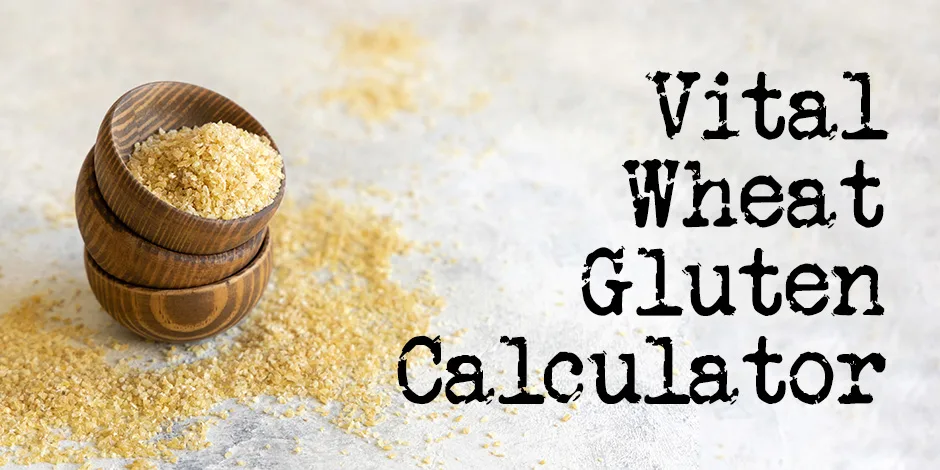Image this: You are at your house, your sourdough starter just grew to double size, and you want to mix your dough. You realize you only have all-purpose flour, and you need some high-protein flour. Then you remember you have that bag of Vital Wheat Gluten that you never used. It’s almost pure protein, but not exactly. So how much do you put in your flour to make the perfect amount of protein?
Well, here’s the answer. Type in the protein of your low-protein flour, the protein of your vital wheat gluten, the protein you need for the mixed flour, and the amount of flour you need. All in grams. We are all bakers here, right?
If you want to support my work here on the site and on YouTube, you can buy vital wheat gluten on Amazon. That’s an ad link, so I will get a percentage of the sale if you buy through this link.
After you finish typing, you’ll get the result. It’s that easy.
What is vital wheat gluten?
By washing the wheat flour dough with water until all the starch granules have been removed, producers derive vital wheat gluten, which contains a very high amount of gluten. People may also call it wheat gluten, gluten flour, or seitan.
Moreover, people commonly use vital wheat gluten as an ingredient in baking to improve the texture and elasticity of dough. Bakers frequently add it to bread dough to increase its ability to rise, create a chewy texture, and improve its crumb structure.
It is important to note that vital wheat gluten contains gluten, a type of protein that can cause allergic reactions or digestive issues in some people with gluten sensitivity or celiac disease.
How do you use it?
Cooking and baking enthusiasts use vital wheat gluten in various ways, as it is a versatile ingredient. Here are a few common methods to use it:
- Baking: You can add vital wheat gluten to your bread dough to improve the bread’s texture, elasticity, and rise. Generally, you can add 1 tablespoon of vital wheat gluten per cup of flour to your bread dough recipe.
- Meat substitute: You can use vital wheat gluten to make a vegetarian or vegan meat substitute called seitan. To make seitan, mix vital wheat gluten with water and seasonings, knead the dough, and simmer it in a flavorful broth for about an hour. Seitan can be sliced, grilled, or sautéed like meat.
- Thickener: You can use vital wheat gluten as a thickener in sauces, soups, and stews. Just add a small amount of vital wheat gluten to the liquid and whisk until it thickens.
- Binder: You can use vital wheat gluten as a binder in veggie burgers, meatballs, or other patties. It will help hold the ingredients together and improve their texture.
When using vital wheat gluten, be sure to follow the recipe instructions carefully and measure the ingredients accurately for the best results. Also, remember that some people may be allergic to gluten, so it’s important to check if anyone you are cooking for has gluten sensitivity or celiac disease before using this ingredient.



